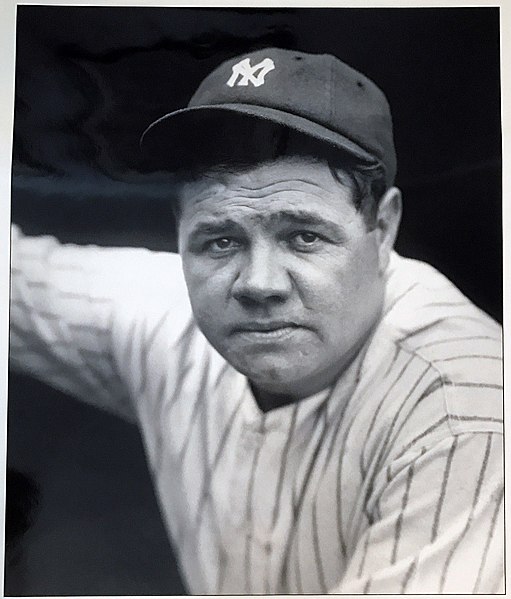The Babe Ruth Way: Leadership Lessons from a Baseball Legend

The Legend of Babe Ruth: A Story of Leadership and Success
Babe Ruth, born George Herman Ruth Jr. on February 6, 1895, was a legendary American professional baseball player. His impressive statistics, including 714 home runs and a .342 batting average, earned him a place in the Baseball Hall of Fame in 1936. While Babe Ruth is well known for his contributions to the game of baseball, he also exhibited exceptional leadership qualities both on and off the field.
In today’s fast-paced and complex business world, leaders face various challenges, including managing teams, making difficult decisions, and adapting to change. By examining the leadership lessons and stories of Babe Ruth, we can learn from his experiences and apply them to our own leadership journeys.
Babe Ruth’s early years were filled with challenges and obstacles that he had to overcome. Born in Baltimore, Maryland, he was sent to a reform school at a young age due to his troublesome behavior. While at the school, he was introduced to baseball, which would become his passion and eventually his career. Babe Ruth’s early struggles taught him the importance of perseverance, discipline, and hard work. He learned that in order to achieve his goals, he had to work tirelessly, even when facing setbacks.
Throughout his baseball career, Babe Ruth exhibited exceptional leadership qualities. He was a charismatic and influential figure who led by example, inspiring his teammates to work harder and aim higher. He set ambitious goals for himself and his team, and he had the determination and resilience to see them through.
In addition to his on-field success, Babe Ruth was also a philanthropist and a role model for many. He often visited hospitals to cheer up sick children and donated money to charitable causes. His selflessness and generosity demonstrated that leadership goes beyond winning games and achieving personal success.
Today, we can learn valuable lessons from Babe Ruth’s leadership style, including the importance of visualization, self-belief, and leading by example. His legacy continues to inspire future generations of leaders, reminding us that with hard work, determination, and a passion for excellence, we can achieve greatness in our personal and professional lives.
In this article, we will explore Babe Ruth’s life and career, examining his leadership lessons and legacy. By understanding the qualities that made him a successful leader, we can apply these lessons to our own leadership journeys and make a positive impact in our organizations and communities.
Babe Ruth’s Early Years
Babe Ruth’s early years were marked by hardship and struggle. His parents, George Herman Ruth Sr. and Katherine Schamberger, had eight children, but only two of them survived infancy. Babe Ruth’s father owned a saloon in Baltimore, which was frequented by many unsavory characters. As a result, young Babe was exposed to drinking, smoking, and gambling at an early age.
Babe’s parents soon realized that they could no longer care for him, and they sent him to St. Mary’s Industrial School for Boys, a reform school in Baltimore, when he was just seven years old. At the school, Babe met Brother Matthias, who became a father figure to him and introduced him to the game of baseball. Under Brother Matthias’s guidance, Babe developed his skills as a player and discovered his passion for the game.
Babe’s early experiences at St. Mary’s taught him the value of discipline, hard work, and perseverance. He had to work hard to improve his skills and overcome the many obstacles he faced. Babe’s determination and resilience helped him stand out from his peers and set him on the path to success.
Babe’s talent as a baseball player soon caught the attention of Jack Dunn, the owner of the Baltimore Orioles, a minor league team. In 1914, at the age of 19, Babe was signed to a contract with the Orioles. He quickly proved himself as a talented player, and his reputation began to grow.
Babe’s early years also taught him the importance of loyalty and commitment. He remained loyal to his team and his fans throughout his career, never forgetting where he came from or the challenges he had faced. He was committed to his craft, working tirelessly to improve his skills and achieve his goals.
Babe’s early experiences as a young boy and a minor league player laid the foundation for the leadership qualities he would exhibit later in his career. His ability to overcome adversity, his commitment to hard work and discipline, and his loyalty to his team and his fans all contributed to his success as a leader on and off the field. Babe Ruth’s early years serve as a reminder that even in the face of adversity, with determination and hard work, we can achieve our goals and become successful leaders.
Babe Ruth’s Baseball Career
Babe Ruth’s baseball career spanned over 22 seasons, during which he played for three different teams: the Boston Red Sox, the New York Yankees, and the Boston Braves. He is widely considered one of the greatest baseball players of all time, and his impressive statistics speak for themselves.
Throughout his career, Babe Ruth exhibited exceptional leadership qualities on the field. He was a natural leader, both in terms of his talent as a player and his ability to inspire and motivate his teammates. He was a charismatic and influential figure who led by example, inspiring those around him to work harder and aim higher.
One of Babe Ruth’s most remarkable qualities was his ability to set and achieve ambitious goals. He set his sights on hitting more home runs than any other player in history, and he was determined to achieve this goal no matter what it took. Babe Ruth’s relentless pursuit of greatness inspired his teammates and his fans, and he became a symbol of what was possible with hard work and determination.
Babe Ruth was also a master at visualizing success. He would often imagine himself hitting home runs, and he would visualize every detail of the ball flying over the fence. By visualizing success in this way, Babe Ruth was able to focus his mind and his energy on achieving his goals, and he inspired others to do the same.
Another key leadership quality that Babe Ruth exhibited was his self-belief and self-confidence. He knew he was the best player on the field, and he wasn’t afraid to show it. Babe Ruth’s confidence was contagious, and his teammates fed off of his energy and enthusiasm. He was a positive force on the field, always pushing himself and his teammates to do better.
Babe Ruth also knew the value of teamwork. He understood that winning games required a collective effort, and he was always willing to put the team’s needs ahead of his own. Babe Ruth’s commitment to teamwork and his ability to inspire his teammates helped him to become one of the most successful players in the history of baseball.
Finally, Babe Ruth’s career was marked by his resilience and perseverance. He faced numerous setbacks and challenges throughout his career, including injuries, personal setbacks, and even a trade to the New York Yankees. Despite these challenges, Babe Ruth never gave up. He continued to work hard and push himself to new heights, and he became a legend in the process.
Babe Ruth’s baseball career was marked by his exceptional leadership qualities both on and off the field. He was a natural leader, inspiring his teammates to work harder and aim higher. His ability to set and achieve ambitious goals, his skill at visualizing success, his self-belief and self-confidence, his commitment to teamwork, and his resilience and perseverance all contributed to his success as a leader. Babe Ruth’s legacy serves as a reminder that with hard work, determination, and a passion for excellence, we too can achieve greatness in our personal and professional lives.
The Babe Ruth Story: Leadership Lessons
Babe Ruth’s life story is not just a tale of a great baseball player, but also a story of leadership, determination, and success. His achievements and leadership style have inspired generations of leaders in various fields. In this section, we will explore some of the key leadership lessons that we can learn from Babe Ruth’s life story.
The power of visualization and goal-setting
One of the most notable aspects of Babe Ruth’s leadership style was his ability to visualize success and set ambitious goals for himself and his team. He had a clear vision of what he wanted to achieve, and he worked tirelessly to make that vision a reality.
By visualizing success in detail, Babe Ruth was able to focus his mind and his energy on achieving his goals. He would imagine himself hitting home runs, and he would visualize every detail of the ball flying over the fence. This allowed him to remain focused and motivated, even in the face of adversity.
Leaders can learn from Babe Ruth’s example by setting clear goals for themselves and their teams and visualizing success in detail. By doing so, they can remain focused and motivated, even when facing setbacks and challenges.
The importance of self-belief and self-confidence
Babe Ruth was known for his self-belief and self-confidence. He knew he was the best player on the field, and he wasn’t afraid to show it. Babe Ruth’s confidence was contagious, and his teammates fed off of his energy and enthusiasm.
Leaders can learn from Babe Ruth’s example by developing their own self-belief and self-confidence. By believing in themselves and their abilities, they can inspire their teams to believe in themselves as well.
The value of failure and learning from mistakes
Despite his many successes, Babe Ruth also experienced his fair share of failures and setbacks. However, he never allowed these failures to define him or deter him from his goals. Instead, he saw them as opportunities to learn and grow.
Leaders can learn from Babe Ruth’s example by embracing failure and using it as a learning opportunity. By analyzing their mistakes and failures, they can identify areas for improvement and take steps to address them.
The role of passion and enthusiasm in leadership
Babe Ruth’s passion for baseball was infectious. He loved the game, and he played with a level of enthusiasm and excitement that was unmatched. This passion and enthusiasm were contagious, and his teammates were inspired to play with the same level of energy and excitement.
Leaders can learn from Babe Ruth’s example by finding and embracing their own passions. By doing so, they can inspire their teams to be more passionate and enthusiastic about their work.
The significance of leading by example
Finally, Babe Ruth’s leadership was characterized by his ability to lead by example. He worked hard, played hard, and never asked his teammates to do anything that he wouldn’t do himself. This earned him the respect and admiration of his teammates, who looked up to him as a role model.
Leaders can learn from Babe Ruth’s example by leading by example in their own work. By working hard, demonstrating a strong work ethic, and being willing to roll up their sleeves and get their hands dirty, they can inspire their teams to do the same.
Babe Ruth’s life story is a testament to the power of visualization, self-belief, and self-confidence, as well as the importance of failure, passion, enthusiasm, and leading by example. By embracing these leadership lessons, leaders can achieve greatness in their personal and professional lives, just as Babe Ruth did in his baseball career.
Babe Ruth’s Leadership Legacy
Babe Ruth’s impact on the game of baseball is undeniable, but his influence on leadership development extends far beyond the baseball diamond. He was a trailblazer who set a new standard for excellence in leadership, inspiring future generations of leaders in various fields. In this section, we will explore Babe Ruth’s leadership legacy and the lasting impact he has had on leadership development.
The impact Babe Ruth had on the game of baseball
Babe Ruth’s impact on the game of baseball cannot be overstated. He transformed the sport with his incredible talent, breaking records and setting new standards of excellence. He helped to popularize the game, drawing crowds of fans to ballparks across the country.
But Babe Ruth’s impact on baseball went beyond his on-field success. He also played a key role in shaping the culture of the sport, introducing new attitudes and behaviors that would influence the game for decades to come. He was a natural leader, inspiring his teammates to work harder and aim higher, and he set an example for other players to follow.
The influence of Babe Ruth’s leadership style on future generations of leaders
Babe Ruth’s leadership style has had a profound impact on future generations of leaders in various fields. His ability to set ambitious goals, visualize success, and lead by example has inspired leaders in sports, business, and other areas to strive for excellence and push the boundaries of what is possible.
Babe Ruth’s self-belief and self-confidence have also been a source of inspiration for leaders in many fields. His willingness to take risks and embrace failure has encouraged others to do the same, and his passion and enthusiasm have inspired others to find and embrace their own passions.
The lasting lessons of Babe Ruth’s leadership
The lessons of Babe Ruth’s leadership are timeless and continue to inspire leaders today. Perhaps the most important lesson is the power of perseverance and determination. Babe Ruth faced many obstacles and setbacks throughout his life and career, but he never gave up. His resilience and perseverance served as an inspiration to others and helped him achieve greatness.
Another important lesson from Babe Ruth’s leadership is the value of teamwork. He understood that winning games required a collective effort, and he was always willing to put the team’s needs ahead of his own. His commitment to teamwork and his ability to inspire his teammates helped him to become one of the most successful players in the history of baseball.
Finally, Babe Ruth’s legacy is a reminder of the importance of leading by example. His work ethic, passion, and enthusiasm inspired others to do the same, and his willingness to roll up his sleeves and get his hands dirty earned him the respect and admiration of his teammates and fans.
Babe Ruth’s leadership legacy is a testament to the power of perseverance, determination, teamwork, and leading by example. His impact on the game of baseball and leadership development has been far-reaching and enduring, and his lessons continue to inspire leaders today. Babe Ruth’s legacy serves as a reminder that with hard work, determination, and a passion for excellence, we can achieve greatness in our personal and professional lives.
Babe Ruth’s Leadership Legacy: Inspiring the Next Generation of Leaders
Babe Ruth’s leadership legacy serves as a powerful example of what can be achieved with hard work, determination, and a passion for excellence. His ability to set ambitious goals, visualize success, and lead by example has inspired leaders in many fields, and his impact on leadership development has been far-reaching and enduring.
Babe Ruth’s leadership style was characterized by his ability to inspire and motivate others. He was a natural leader who led by example, demonstrating a strong work ethic, passion, and enthusiasm. He was committed to his team and his fans, and he never lost sight of his goals, even in the face of adversity.
The lessons of Babe Ruth’s leadership are timeless and continue to inspire leaders today. From the power of visualization and goal-setting to the importance of self-belief, teamwork, and leading by example, Babe Ruth’s leadership legacy provides a roadmap for success in leadership and in life.
As we navigate today’s fast-paced and complex business world, we can learn valuable lessons from Babe Ruth’s life and career. By examining his leadership style and the qualities that made him a successful leader, we can apply these lessons to our own leadership journeys and make a positive impact in our organizations and communities.
In conclusion, Babe Ruth’s leadership legacy is a testament to the power of perseverance, determination, and a passion for excellence. He was a natural leader who set ambitious goals, visualized success, and led by example, inspiring others to do the same. His legacy continues to inspire future generations of leaders, reminding us that with hard work, determination, and a commitment to excellence, we can achieve greatness in our personal and professional lives.






